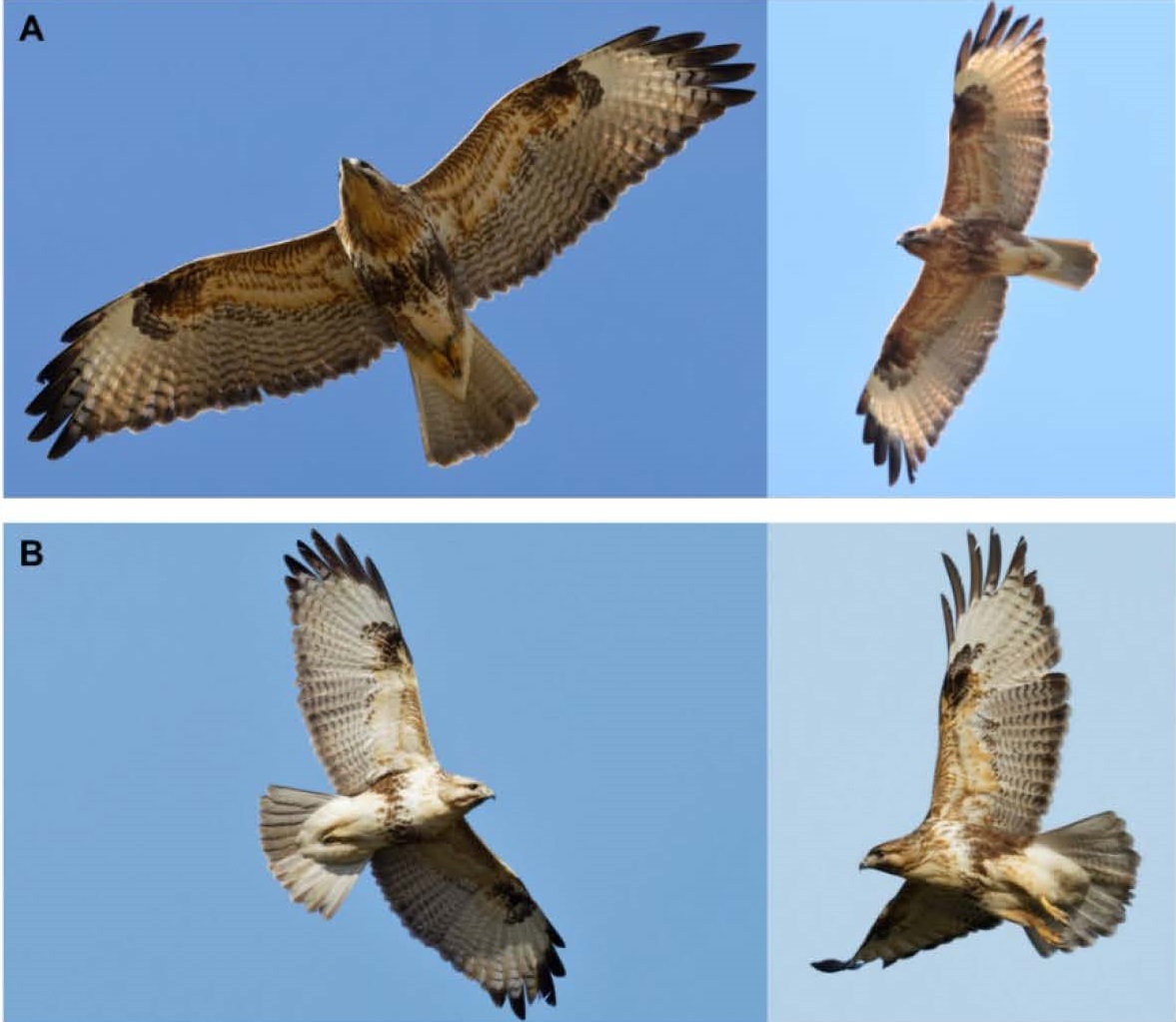July 22, 2022
GPS tracking of the two subspecies of the Eastern Buzzard revealed a migratory divide along the Sea of Japan and the Eurasian Continental subspecies is first confirmed to be wintering in Japan.
A joint research group led by Professor Noriyuki M. Yamaguchi of the graduate School of Fisheries and Environmental Sciences, Nagasaki University, Curator Toru Nakahara of Kitakyushu Museum of Natural History and Human History, Technical Specialist Kazuya Nagai of the Faculty of Agriculture, Iwate University, Fumitaka Iseki of the working group on Threatened Wildlife, Toshiro Yoshioka of the NPO Oosekka-land, and Fumihito Nakayama of the Japan Wildlife Research Center has found that: Eurasian continental subspecies of the Eastern Buzzard (Buteo japonicus), a migratory bird of prey that lives in East Asia, has wintered in Japan. The migratory routes of subspecies of the Eurasian continent and the Japanese Archipelago (broadly including the Japanese mainland and Sakhalin) are divided along the Sea of Japan.
■Research Abstract
In the Far East, multiple avian lineages show a common divergence pattern between the Eurasian continent and the Japanese Archipelago across the Sea of Japan. Buteo japonicus burmanicus and Buteo japonicus japonicus are often regarded as a pair of subspecies of the Eastern Buzzard that differentiated in the Far East during the Pleistocene. However, the background to their differentiation remains unknown because their taxonomic ambiguity prevents researchers from comparing their migration routes, distribution ranges and other characteristics. Here, we investigated differences in the migration routes and distribution ranges of the two genetically identified subspecies. We identified 28 B. j. burmanicus and B. j. japonicus individuals based on their mitochondrial DNA sequences and tracked their migration from Japan using GPS tracking devices. Three key results were found. First, B. j. burmanicus wintered in western Japan. Second, B. j. burmanicus migrated to the Eurasian continent and flew north along the eastern coast of the continent, whereas B. j. japonicus migrated within the Japanese Archipelago. Lastly, the summering range of B. j. burmanicus did not overlap with that of B. j. japonicus. Our results suggest that the migratory directions and breeding ranges of B. j. burmanicus and B. j. japonicus are divided along the Sea of Japan. We inferred that the presence of the Sea of Japan and the migratory behaviour of soaring raptors to avoid crossing a large, cold-water body may have prevented gene flow between them and caused endemism of B. j. japonicus in the Japanese Archipelago.
 The Eurasian Continental subspecies Buteo japonicus burmanicus (A) and the Japanese subspecies
B. j. japonicus (B). Photo by Fumitaka Iseki and Toshiro Yoshioka. |
For the details of this research, see “GPS tracking of the two subspecies of the Eastern Buzzard (Buteo japonicus) reveals a migratory divide along the Sea of Japan” Toru Nakahara, Kazuya Nagai, Fumitaka Iseki, Toshiro Yoshioka, Fumihito Nakayama and Noriyuki M.Yamaguchi (2022).
IBIS. DOI:https://doi.org/10.1111/ibi.13093
This release is also available in Japanese.










